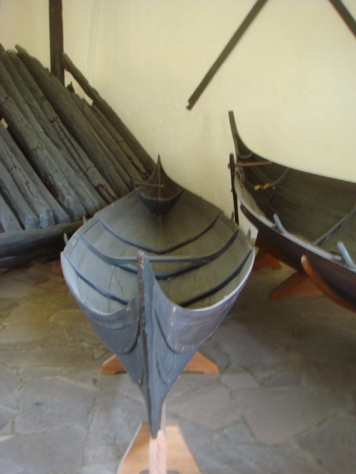
 Petter Southall learned to work wood building traditional Norwegian sailing/rowboats. Working with numerous old boatbuilders in boatyards tucked away in the fjords of western Norway, Petter learned to steambent large sections of timber, to work curves by eye and to understand the breathing organic material that is wood.
Petter Southall learned to work wood building traditional Norwegian sailing/rowboats. Working with numerous old boatbuilders in boatyards tucked away in the fjords of western Norway, Petter learned to steambent large sections of timber, to work curves by eye and to understand the breathing organic material that is wood.
Most of all he fell in love with the most ambitious of all traditional Norwegian boats, the Oselvar Faering. A direct descendant of the rowboat found in the Gokstad Viking Ship now conserved in the Viking Ship Museum in Oslo, the Oselvar Faering has only three very wide strakes in a clinker-built construction. The boat is so light and flexible, it surfs on top of the waves, making for a very exciting sail. It is called the Stradivarius of the Seas because it is so hard to build and so beautiful to sail.
In 1980, aged 20, Petter was selected by the Horda Folk Museum, Bergen, to be one of eight boatbuilders to be taught to build the Oselvar Faering by John Askvik and Karl Søvik, the aging last members of the boat-building families who had kept the design well guarded, passing it down from generation to generation since the Vikings.
 Petter went on to make many Oselvars but he still sails his first one from West Bay harbour in Dorset. The craftsmanship required to make this particular design and the beautiful lines of its three wide twisted strakes have been an inspiration for many of Petter’s most successful furniture designs. In fact it is while enjoying the freedom of sailing his boat out in Lyme Bay that design solutions and new concepts often come to him. The source for the Art Deco streamlined appearance of many of his designs may be more connected to their inspiration from wind and sea than from the study of design history.
Petter went on to make many Oselvars but he still sails his first one from West Bay harbour in Dorset. The craftsmanship required to make this particular design and the beautiful lines of its three wide twisted strakes have been an inspiration for many of Petter’s most successful furniture designs. In fact it is while enjoying the freedom of sailing his boat out in Lyme Bay that design solutions and new concepts often come to him. The source for the Art Deco streamlined appearance of many of his designs may be more connected to their inspiration from wind and sea than from the study of design history.
 The rowboat in the Viking Ship Museum Oslo dates from the ninth century. It is almost identical to the Oselvar Faering except that the detailing is finer and the two oarlocks are made from grown branches from the same branch. The contemporary oarlocks are made from grown branches, making them very strong, but the two are jointed together.
The rowboat in the Viking Ship Museum Oslo dates from the ninth century. It is almost identical to the Oselvar Faering except that the detailing is finer and the two oarlocks are made from grown branches from the same branch. The contemporary oarlocks are made from grown branches, making them very strong, but the two are jointed together.
One reply on “The Source”
visited your showroom in central london many years ago- we had a very warm and cosy chat.
I am a maker too so it is with joy that i see you are still making and producing.
I would be very surprised if you remember me – but i am now in Norway and still have a workshop making furniture and more. Nearby is tresfjord which you surely will have visited as this is the home of boat making on the west coast.